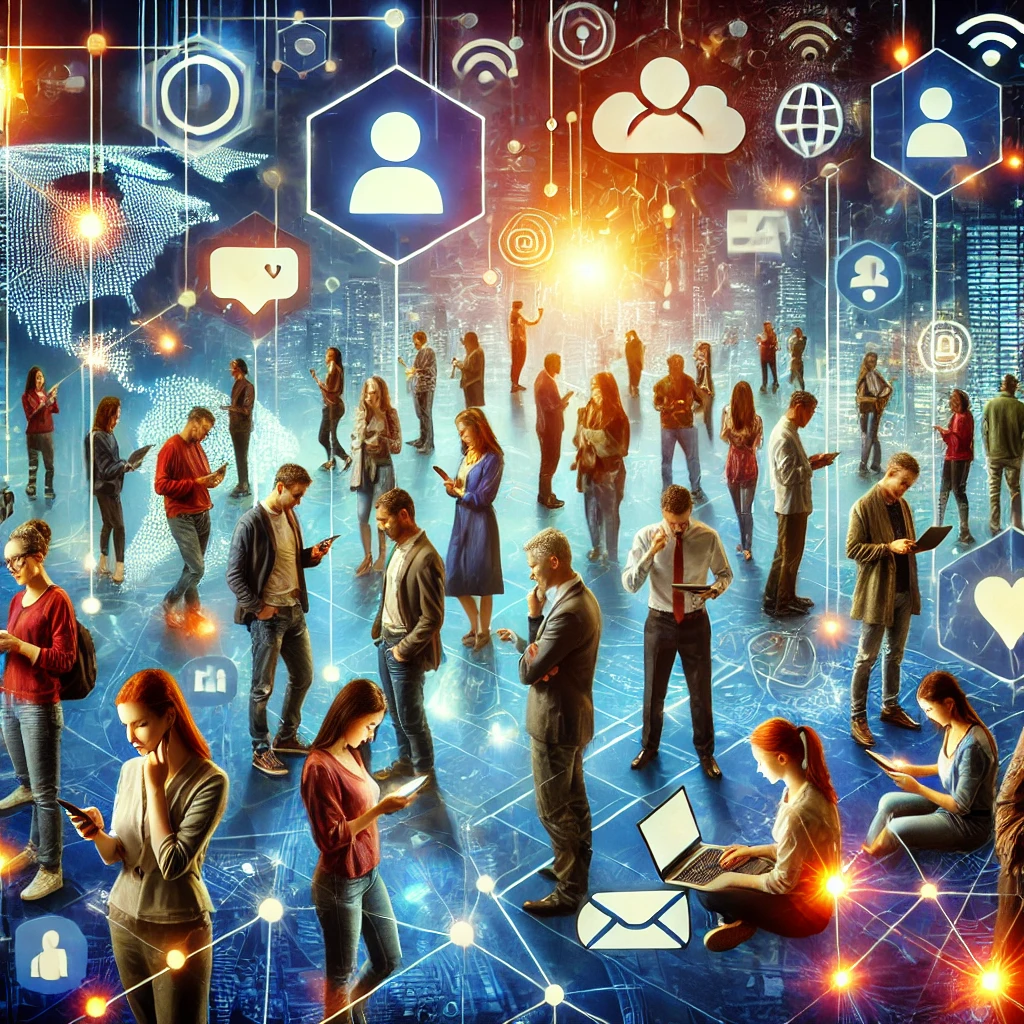The digital age has revolutionized nearly every aspect of our lives, including how we communicate and interact with one another. From the advent of social media to the widespread use of smartphones, technology has redefined the ways we connect, share, and collaborate. While these advancements have brought unparalleled convenience and accessibility, they have also reshaped the nature of human interaction, posing new challenges and opportunities.
This article explores the profound impact of technology on human interaction, examining its benefits, drawbacks, and the evolving dynamics of relationships in a hyper-connected world.
The Rise of Digital Communication
Technology has made communication faster, more efficient, and more accessible than ever before. The days of relying solely on letters or landline telephones are long gone, replaced by instant messaging, video calls, and social media platforms.
1. Instant Connectivity
One of the most significant benefits of technology is its ability to connect people across the globe in real-time. Whether through WhatsApp, Zoom, or email, staying in touch with friends, family, and colleagues has never been easier.
Example:
Video conferencing tools like Microsoft Teams and Zoom have become essential for remote work, enabling seamless collaboration regardless of geographical barriers.
Key Insight:
This instant connectivity fosters global relationships and opens doors to cross-cultural communication, enhancing personal and professional networks.
2. Social Media Revolution
Platforms like Facebook, Instagram, and Twitter have transformed how we share our lives and consume information. Social media has become a hub for everything from personal updates to breaking news.
Positive Impact:
- Provides a space to share milestones, opinions, and creativity.
- Helps maintain long-distance friendships and reconnect with old acquaintances.
Negative Impact:
- Encourages superficial interactions over deep, meaningful connections.
- Contributes to issues like cyberbullying and the spread of misinformation.
How Technology is Changing Relationships
While technology facilitates connection, it has also altered the dynamics of relationships, both positively and negatively.
1. Strengthening Bonds
Technology provides tools that help people stay close, even when physically apart. Regular video calls, group chats, and social media interactions help maintain relationships, especially during times when face-to-face meetings are impossible.
Example:
During the COVID-19 pandemic, technology became a lifeline for many, allowing families and friends to stay connected despite physical distancing measures.
2. The Rise of Online Communities
Digital platforms have enabled the formation of online communities where individuals with shared interests can interact. These virtual spaces offer support, camaraderie, and a sense of belonging.
Example:
Platforms like Reddit and Discord host niche communities where users discuss topics ranging from hobbies to mental health, fostering meaningful virtual connections.
3. The Challenge of Screen Time
Excessive reliance on technology has led to concerns about screen time and its impact on relationships. Spending too much time on devices can detract from real-world interactions and create emotional distance.
Key Insight:
Balancing online and offline interactions is essential to maintaining healthy relationships.
The Impact on Workplace Interaction
The workplace is another area where technology has drastically altered communication and collaboration.
1. Remote Work and Virtual Teams
With the rise of remote work, technology has made it possible for teams to collaborate across time zones. Tools like Slack, Asana, and Microsoft Teams streamline communication and project management.
Example:
Global companies now operate with remote teams, reducing the need for physical offices and increasing productivity.
2. Digital Collaboration Tools
Shared platforms such as Google Workspace and Trello have revolutionized how teams work together, enabling real-time collaboration on projects.
Key Insight:
While these tools enhance efficiency, they also require employees to adapt to new modes of communication, which can sometimes feel impersonal.
Technology and Emotional Connection
One of the biggest challenges of the digital age is maintaining emotional connections in a world dominated by screens.
1. Text vs. Face-to-Face Communication
Text-based communication, while convenient, often lacks the emotional depth of face-to-face interactions. Non-verbal cues like tone, body language, and facial expressions are missing in digital conversations.
Example:
Misinterpretations are more likely to occur in text messages or emails compared to in-person discussions.
2. The Role of Video Calls
Video calls bridge the gap by providing a more personal form of communication. While they cannot fully replicate in-person interactions, they bring a sense of closeness that texts or calls cannot achieve.
The Challenges of the Digital Age
Despite its advantages, technology also poses several challenges to human interaction:
1. Digital Overload
Constant notifications, messages, and updates can overwhelm individuals, leading to stress and burnout.
2. Decline in Social Skills
As digital communication becomes the norm, some individuals may struggle with face-to-face interactions, leading to a decline in social skills.
3. Privacy Concerns
The widespread use of technology has raised concerns about data privacy and the potential misuse of personal information.
Adapting to a Hybrid World
The key to thriving in the digital age lies in finding a balance between technology and traditional forms of interaction.
1. Set Boundaries
Limit screen time and prioritize offline interactions to nurture deeper relationships.
2. Embrace Technology Mindfully
Use technology as a tool to enhance communication, not replace it. Opt for video calls or voice messages over text for more meaningful conversations.
3. Stay Present
Practice being fully present during in-person interactions by minimizing distractions from devices.
Conclusion
The digital age has undeniably transformed human interaction, offering new ways to connect and communicate. While these advancements bring numerous benefits, they also present challenges that require thoughtful navigation. By leveraging technology mindfully and balancing online and offline interactions, we can create a future where human connections remain meaningful and authentic.
For more insights and tips on navigating the digital age, stay tuned to our website—your trusted source for news and practical advice on living in a hyper-connected world.
